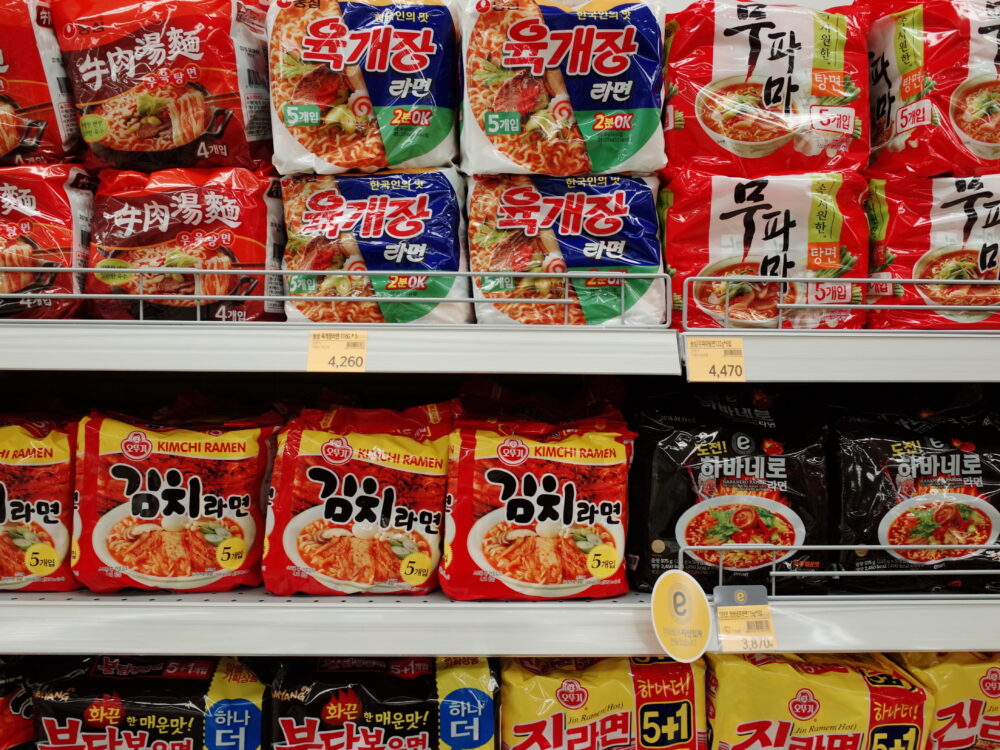South Koreans have an undeniable passion for instant noodles, known as “ramyeon” (라면) in Korean. These convenient and flavorful noodles have become a staple in many Korean households, often enjoyed at least once a week, if not more frequently. In 2019, South Korea boasted the highest per capita consumption of instant noodles in the world, with the average South Korean consuming a whopping 75 servings annually. But are Korean instant noodles a healthy choice?
Instant Noodles in Korean Pop Culture
Instant noodles have cemented their place in Korean pop culture. Whether you’re watching a Korean drama or simply observing daily life, you’re likely to encounter a scene featuring someone relishing a hot cup of instant noodles. They are not just a quick meal but a comfort food for many South Koreans, often chosen to alleviate the effects of a night of hard drinking.
Instant Noodles Go Global
Korean instant noodles have also made their mark globally, particularly in neighbouring Asian countries. Some varieties, like Samyang’s spicy noodles, even gained international attention for their claim to be the “world’s spiciest noodle.” Samyang noodles boast a spiciness level of 8,000 Scoville Heat Units (SHU), a measure of capsaicin’s heat in a food item. For context, jalapeño peppers and chipotles typically range from 2,500 to 8,000 SHU.
These days, Korean instant noodles are readily available on the shelves of convenience stores and grocery stores worldwide, often distinguishable by their visually appealing packaging adorned with Hangeul characters.

Are Korean Instant Noodles Healthy?
While instant noodles are undeniably popular in South Korea and beyond, it’s essential to recognize that they are generally not a healthy dietary choice. Instant noodles tend to be high in sodium and fat, with one serving containing around 860 milligrams of sodium. Excessive salt intake has been linked to various circulatory issues, including high blood pressure, certain heart diseases, and strokes.
Moreover, instant noodles are rich in carbohydrates but lack essential nutrients such as proteins, vitamins, and minerals, which are crucial for overall health and growth.
Another concern is the use of monosodium glutamate (MSG), a common flavour-enhancing additive found in many instant noodles and processed foods. While dietary intake of MSG is generally considered safe, excessive consumption can lead to side effects such as headaches, nausea, and heart palpitations.
Why South Koreans Consume Instant Noodles
Given the understanding that instant noodles are not the healthiest choice, why do South Koreans consume them so enthusiastically?
Instant noodles were originally invented in Japan in 1958 by dehydrating steamed and seasoned noodles through flash frying. South Koreans took this concept and elevated it. For them, instant noodles became more than just a quick meal; they transformed it into a customizable dish. Many South Koreans add ingredients to make their instant noodles as nutritious as possible. It’s not uncommon to find additions like kimchi, vegetables, eggs, cheese, beef, and even seafood in a bowl of Korean instant noodles. Traditional Korean side dishes, known as “banchan” (반찬), are also frequently incorporated.
Key Takeaways
Korean instant noodles are akin to most processed food items in terms of nutritional content—generally not considered healthy. However, this doesn’t mean you should completely deprive yourself of the deliciousness of Korean instant noodles. Enjoying a serving or two every couple of weeks is generally acceptable.
If possible, opt for instant noodles that are lower in sodium and fat, and be sure to read the label before purchasing.
Take a page from South Koreans’ playbook when consuming instant noodles. Enhance the nutritional value by adding ingredients that provide the nutrients lacking in the noodles themselves, such as meat and vegetables.





